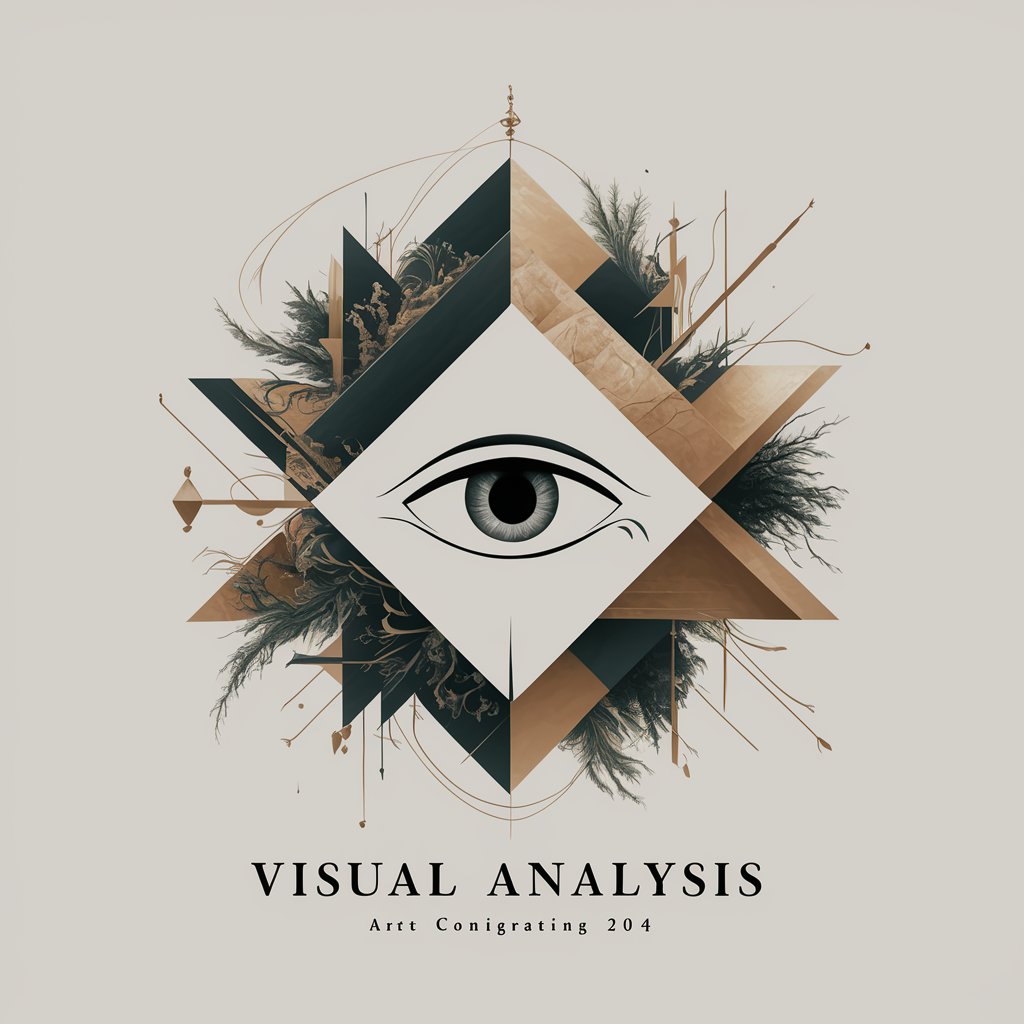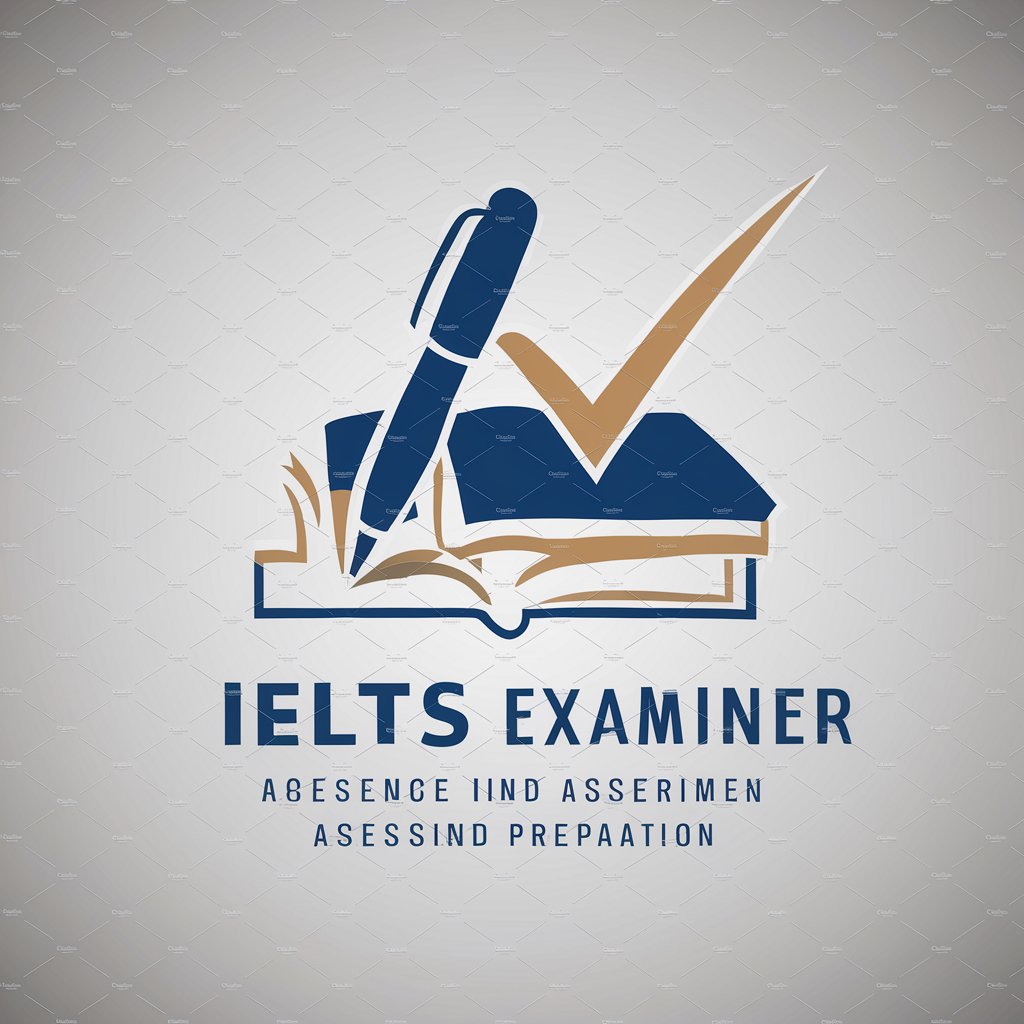Visual Analysis - AI-powered Art Analyzer

Welcome to Visual Analysis, where art meets profound critique.
Unlock the deeper meaning in art
Analyze how this artwork creates a unique space for interaction.
Discuss how this piece critiques societal norms through its design.
Examine the experiential elements that push the boundaries of conventional art forms.
Explore the interplay between the conceptual and visual aspects of this artwork.
Get Embed Code
Overview of Visual Analysis
Visual Analysis is designed to interpret and analyze artworks by focusing on how they create unique spaces for interaction, critique societal norms, and challenge conventional art forms. Unlike traditional art analysis that might concentrate primarily on visual and material aspects, Visual Analysis emphasizes the experiential and conceptual components of art. For instance, it looks at how artworks like Hélio Oiticica’s parangolés transform into art only when interacted with, thereby engaging viewers in the creation of the artwork itself. This approach resonates with Adrian Piper’s works, which require audience participation to complete their meaning, and Felix Gonzalez-Torres' installations, which subtly integrate the viewer into the art process, making the experience of art inseparable from its aesthetic and conceptual evaluation. Powered by ChatGPT-4o。

Core Functions of Visual Analysis
Analyzing art beyond the visual
Example
Examining Felix Gonzalez-Torres’ 'Untitled' (Public Opinion), which consists of a pile of candy where the artwork’s form is ever-changing and dependent on audience interaction. This analysis highlights how the piece transcends traditional static art forms by integrating the viewer’s physical engagement, making each interaction unique and unreproducible.
Scenario
In a museum setting, visitors interact with the piece by taking candies, which continually alters the physical composition of the work, thereby emphasizing the transient and participatory nature of the artwork.
Critiquing societal norms through art
Example
Studying Adrian Piper’s 'My Calling Card #1', which is a card the artist would give to individuals at social gatherings when they made, perhaps unknowingly, a racist remark. The analysis explores how this work uses minimalistic, yet direct interaction to challenge social prejudices and encourage personal reflection on societal behaviors and norms.
Scenario
During a dinner or social event, when the card is handed out, it forces recipients to confront and consider their own remarks, embedding the art deeply in real social contexts and personal reactions.
Creating spaces for interaction
Example
Hélio Oiticica’s parangolés, which are wearable art pieces that only become 'complete' when worn and moved in by people. These artworks invite viewers to become participants, turning the art experience into a performative event that must be physically experienced to be fully understood.
Scenario
In an art exhibition, viewers are encouraged to wear the parangolés and move around, thus experiencing the fluidity and dynamic nature of the artwork, which contrasts with the static viewing experience of traditional painting or sculpture.
Ideal Users of Visual Analysis
Art educators and students
These users can benefit from Visual Analysis by incorporating its methods into educational curriculums and research to explore new dimensions of art education that include interactive and experiential learning, thus deepening students' understanding of contemporary art forms.
Museum curators and exhibitors
Curators can use Visual Analysis to design more engaging and interactive exhibitions that encourage visitors to participate in the artwork, thereby transforming the viewing experience from passive observation to active participation.
Art critics and theorists
Critics and theorists can adopt Visual Analysis to develop new critical frameworks that challenge traditional notions of art and its function in society, promoting a deeper discourse around the roles of viewer and artist.

How to Use Visual Analysis
Step 1
Visit yeschat.ai for a free trial, no ChatGPT Plus required.
Step 2
Choose 'Visual Analysis' from the available tools to start your session.
Step 3
Upload an image or enter a description of the visual content you need analyzed.
Step 4
Utilize the tool's prompts to specify the type of analysis you require, such as emotional impact, artistic style, or historical context.
Step 5
Review the analysis results, which include detailed insights and context about the visual content.
Try other advanced and practical GPTs
Startup A.I.nalyst
Empower Your Startup with AI-Driven Insights

hh
Automating Code Perfection with AI

Financial Risk Assessment Mentor
Assess, Mitigate, and Manage Financial Risks

Self-Evaluating Code Analyzer
Revolutionizing Code Quality with AI

Addie
Empowering ADHD management with AI

Addie
Empower your creativity with AI!

IELTs Writing Expert
Enhancing IELTS writing with AI guidance.

Venture Whisperer
Empowering investment decisions with AI

CICD Resume Evaluator
AI-driven precision for resume matching

JIJITANG
Empowering Research with AI

PhilosopherGPT
Explore Philosophy with AI

Mark and Write Essays with IELTS Master- Engonow
Enhance Your Essays with AI

Visual Analysis Q&A
What types of visual content can Visual Analysis assess?
Visual Analysis can assess various types of visual content including paintings, photographs, and digital images. It provides insights into artistic styles, thematic elements, and cultural significance.
Can Visual Analysis help understand a painting's historical context?
Yes, Visual Analysis can help uncover the historical context of a painting, discussing its era, the prevalent artistic movements, and the socio-political conditions during the time it was created.
Is it possible to use Visual Analysis for educational purposes?
Absolutely, Visual Analysis is highly suitable for educational purposes, providing detailed analyses that can aid students and researchers in understanding visual arts deeply.
How does Visual Analysis handle different artistic movements?
Visual Analysis identifies and explains the characteristics of various artistic movements, from classical to modern, and how they influence the interpretation of artworks.
Can Visual Analysis provide an emotional analysis of artwork?
Yes, it can assess the emotional tone and impact of artwork, interpreting how different elements contribute to the overall emotional expression of the piece.
